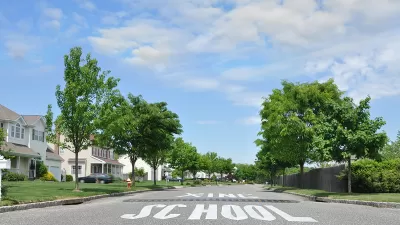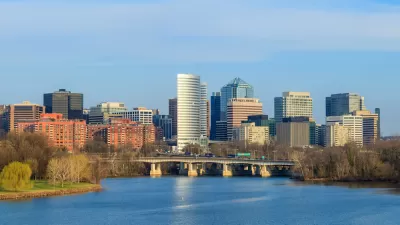A trio of journalists gathers to discuss statistics that show the trends of U.S. population growth has shifted to suburban areas.

"After years of excited talk about the comeback of America’s cities, evidence has been piling up in recent months that the suburbs are doing much better, with even those quirky-but-ubiquitous millennials now moving there in large numbers and buying SUVs," according to the premise of a recent Bloomberg View article.
That premise offers Justin Fox, Conor Sen, and Noah Smith with an opportunity to participate in a discussion about the causes and consequences of the recent resurgence of the suburbs.
The discussion touches on some familiar theories to explain the recent growth of the suburbs: 1) housing choices of the last decade (and mobility choices) were a symptom of a sluggish economy, 2) Millennials might be moving the suburbs not out of choice, but necessity (born of suburban-focused policies on transportation and development), 3) suburbs are increasingly adopting urban models of development, and 4) changes in employment and industry are driving urban growth, but urban land use policies don't allow housing construction to keep pace with job growth.
FULL STORY: Millennials Are Driving the Suburban Resurgence

Study: Maui’s Plan to Convert Vacation Rentals to Long-Term Housing Could Cause Nearly $1 Billion Economic Loss
The plan would reduce visitor accommodation by 25,% resulting in 1,900 jobs lost.

North Texas Transit Leaders Tout Benefits of TOD for Growing Region
At a summit focused on transit-oriented development, policymakers discussed how North Texas’ expanded light rail system can serve as a tool for economic growth.

Why Should We Subsidize Public Transportation?
Many public transit agencies face financial stress due to rising costs, declining fare revenue, and declining subsidies. Transit advocates must provide a strong business case for increasing public transit funding.

How to Make US Trains Faster
Changes to boarding platforms and a switch to electric trains could improve U.S. passenger rail service without the added cost of high-speed rail.

Columbia’s Revitalized ‘Loop’ Is a Hub for Local Entrepreneurs
A focus on small businesses is helping a commercial corridor in Columbia, Missouri thrive.

Invasive Insect Threatens Minnesota’s Ash Forests
The Emerald Ash Borer is a rapidly spreading invasive pest threatening Minnesota’s ash trees, and homeowners are encouraged to plant diverse replacement species, avoid moving ash firewood, and monitor for signs of infestation.
Urban Design for Planners 1: Software Tools
This six-course series explores essential urban design concepts using open source software and equips planners with the tools they need to participate fully in the urban design process.
Planning for Universal Design
Learn the tools for implementing Universal Design in planning regulations.
City of Santa Clarita
Ascent Environmental
Institute for Housing and Urban Development Studies (IHS)
City of Grandview
Harvard GSD Executive Education
Toledo-Lucas County Plan Commissions
Salt Lake City
NYU Wagner Graduate School of Public Service





























